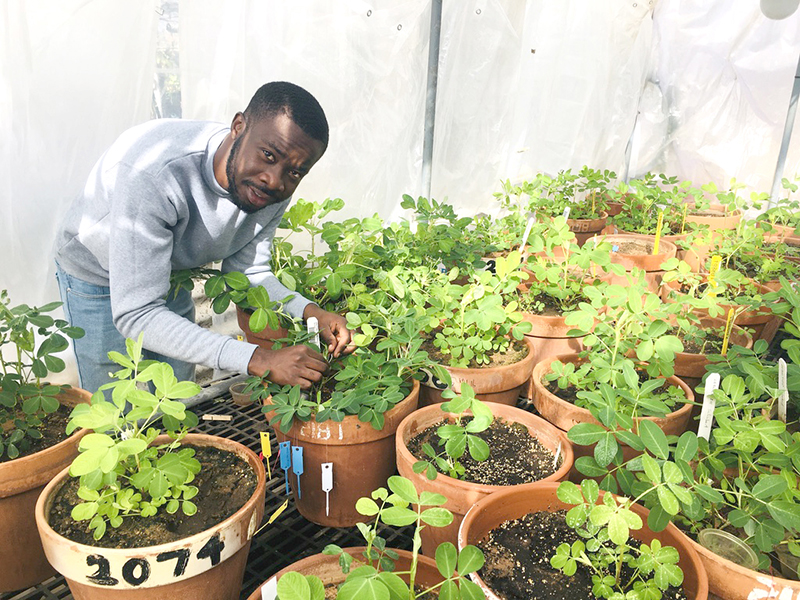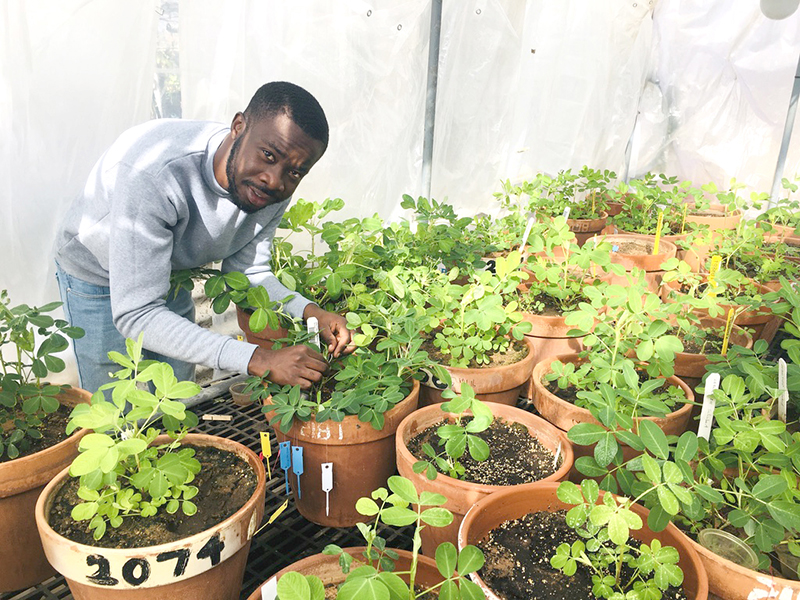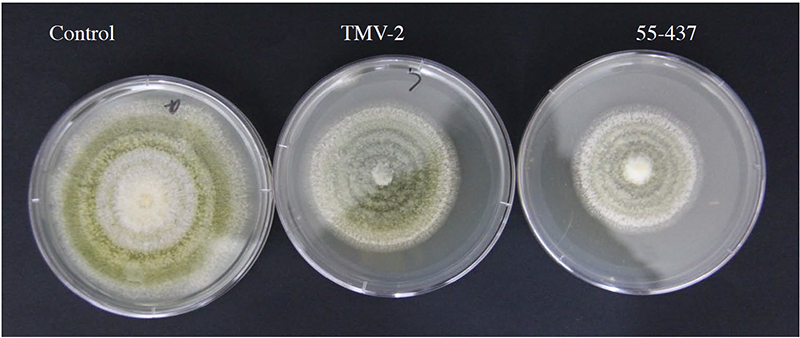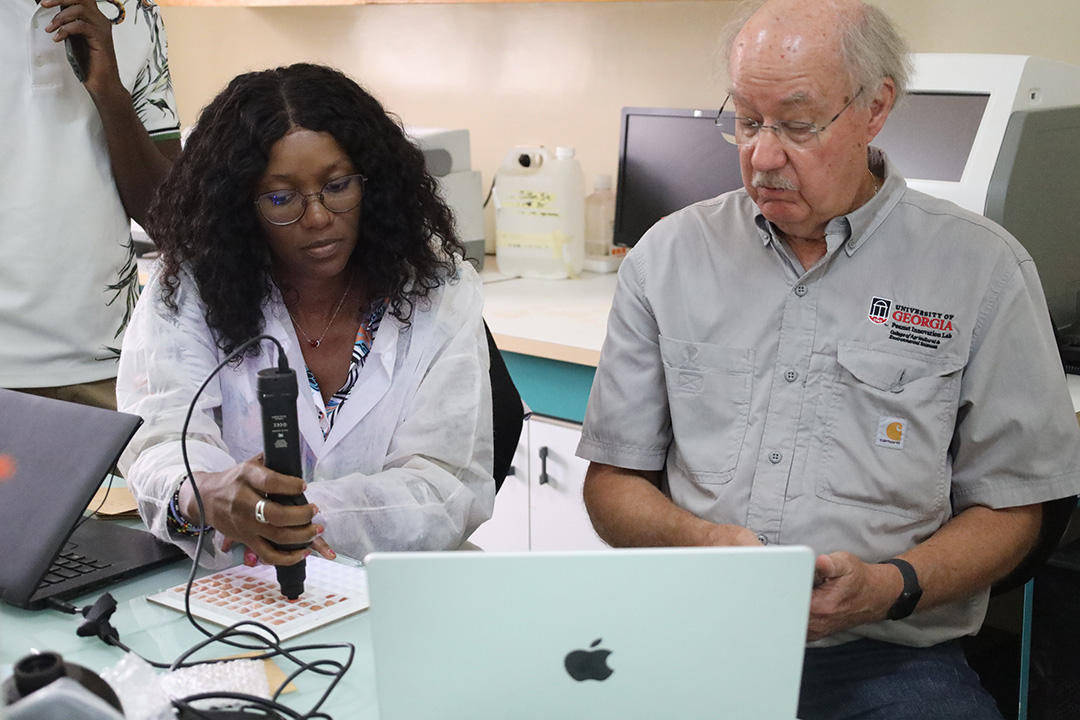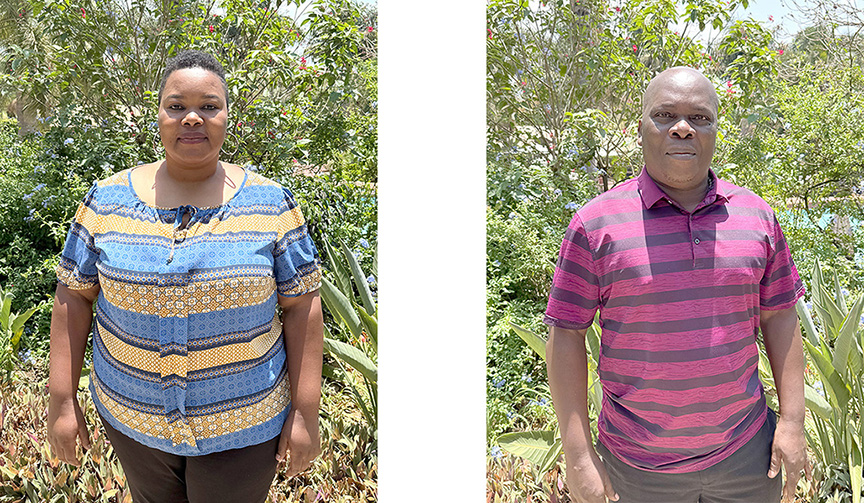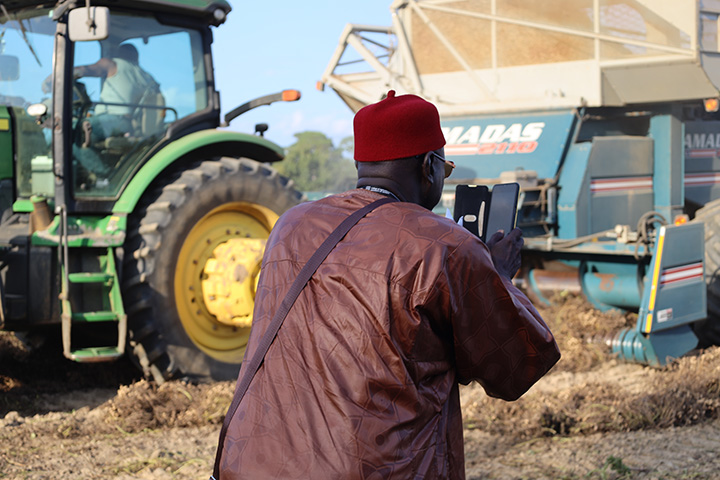Leslie Commey’s interest in plant breeding came from watching his mother work as a vegetable trader in Ghana. A graduate student in biotechnology, Commey now is studying for a master’s degree at Texas Tech University and working on a Peanut Innovation Lab project to find peanut’s natural defenses against aflatoxin.
“I would think, ‘How do they get year-round production of vegetables?’ and that led me to study agriculture in high school and college,” Commey said.
Studying at the university, he quickly discovered modern genomics and the potential to guide plant breeding to get desirable traits beyond a targeted growing season or higher yield.
“I was studying biotechnology where they are using modern tools to find answers. I wanted to solve farmers’ problems. That is when I got more into plant breeding and using molecular tools to develop disease resistance,” he said.
Commey learned about the Feed the Future lab from a fellow student at Kwame Nkrumah University of Science and Technology (KNUST) in Kumasi, and chose to work with Venugopal Mendu, the lead scientist on the “Developing Aspergillus flavus-resistant peanut using seed coat biochemical markers” project.
The project explores whether biochemicals found in the seed coat of peanut can provide a natural protection against the fungus that produces aflatoxin. The work involves uncovering what biochemicals are at work in a peanut seed coat, developing a biochemical Marker Assisted Selection (bMAS) pipeline for breeders in target countries, and developing fungus-resistant lines that can be grown in target countries.
The process began with growing out dozens of peanut lines from the USDA collection and from previous Peanut Innovation Lab work, then screening them for resistance. To date, the project has evaluated 68 lines for resistance to A. flavus, extracting the compounds from the seed coat and assaying the compounds for their effects on A. flavus in radial growth assays.
Lab tests of seed coat samples from lines that are known to have some resistance to A. flavus do show significantly less fungal growth – demonstrating that chemicals in the seed coat, and not just the physical barrier, reduce aflatoxin contamination in some peanut lines.
Hear Commey present the work at a recent student symposium, hosted by the innovation lab.
Variety development through breeding is an exciting area of research for Commey, because the work provides practical solutions to farming and food safety problems, he said.
Variety development research often focuses on yield and consumer preferences (like oil content or taste), but breeding for A. flavus resistance and low aflatoxin contamination could also make the crop safer for local consumers and create potential for exports, Commey said. Finding the genetic markers of the biochemicals responsible for aflatoxin control in the seed coat would empower plant breeders in Africa, and globally, to create lines that meet local needs for drought and disease tolerance, as well as market preferences, along with low aflatoxin contamination.
“You have the potential to mitigate this problem (of aflatoxin contamination),” he said. “The idea is to use the seed coat to create a farmer friendly technique.”

